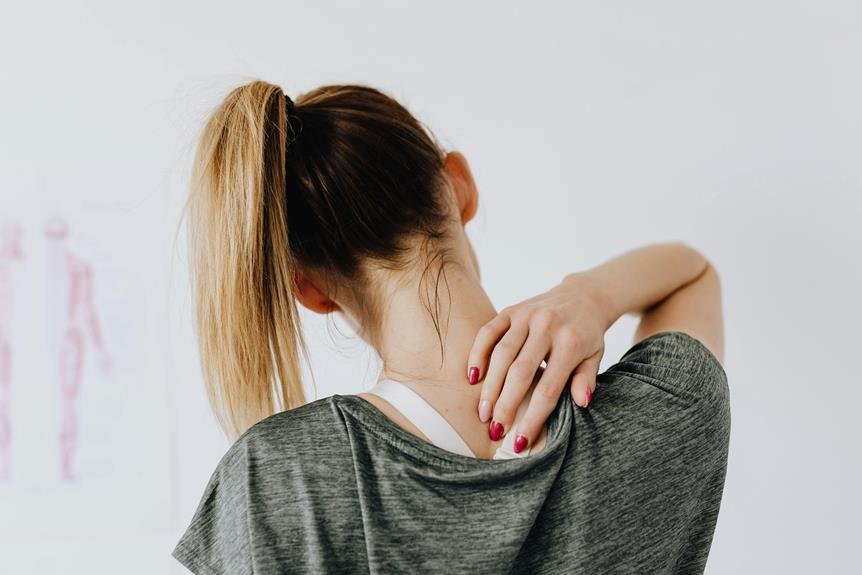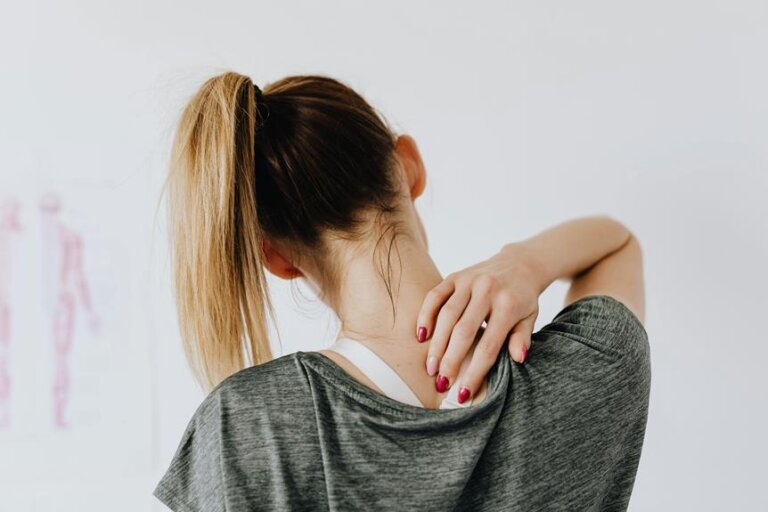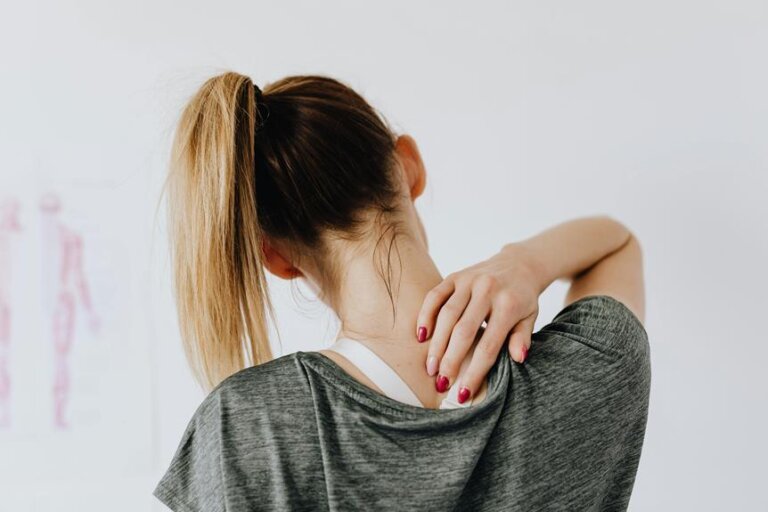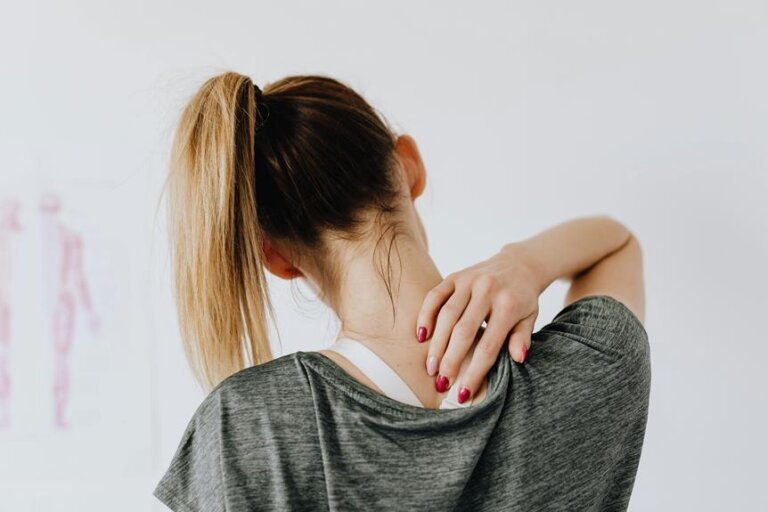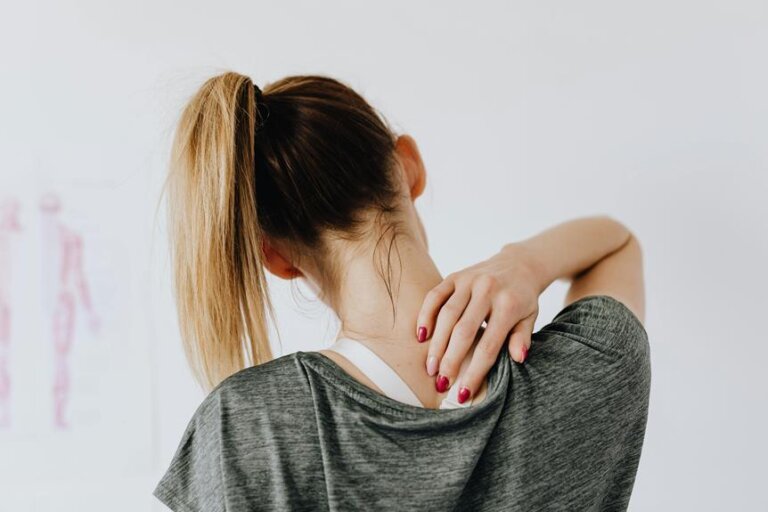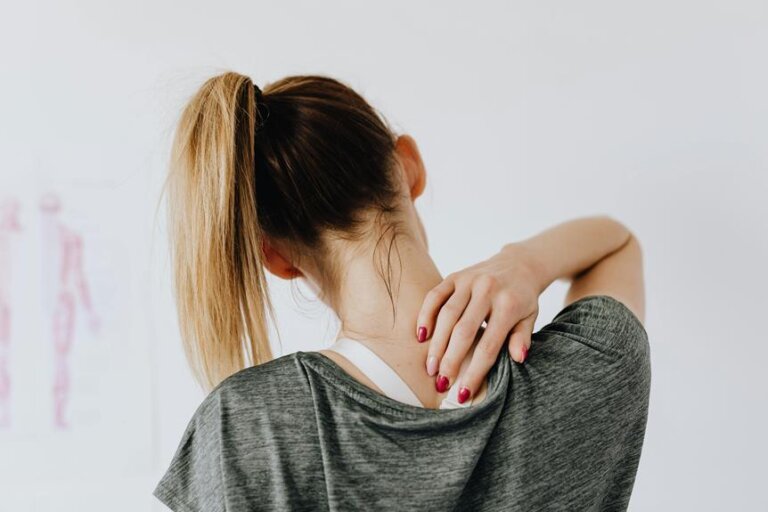5 Common Causes of Back Pain in Individuals Over 50
As you navigate through the golden years, your back might start to hint at the wear and tear it has endured over time.
Ever wondered why? Well, one reason could be the common causes of back pain in individuals over 50.
From Degenerative Disc Disease to Muscle Strains, these culprits can make each day a struggle.
But fear not, understanding these triggers could be the key to finding relief and regaining control over your comfort and mobility.
Degenerative Disc Disease
Experiencing chronic lower back pain after age 50 may be attributed to degenerative disc disease, a common condition characterized by the breakdown of spinal discs. These discs act as cushions between the vertebrae, providing flexibility and absorbing shock. As you age, the discs lose water content and elasticity, becoming more susceptible to damage. Over time, small tears can develop in the outer layer of the disc, leading to pain and inflammation.
You may notice symptoms such as dull or sharp pain in the lower back that may radiate to the hips or legs. The pain may worsen when sitting, bending, lifting, or twisting. In severe cases, degenerative disc disease can cause numbness, tingling, or weakness in the legs.
It's essential to maintain a healthy weight, practice good posture, and engage in regular low-impact exercises to support your spine and manage symptoms. In some instances, physical therapy, medication, or surgery may be recommended to alleviate pain and improve mobility.
Osteoarthritis
Osteoarthritis commonly affects individuals over 50, causing degeneration of joint cartilage and the underlying bone. This condition, also known as degenerative joint disease, can lead to back pain as the cartilage that cushions the joints wears down over time. As a result, the bones may rub against each other, causing pain, stiffness, and inflammation in the affected area.
The lower back is particularly susceptible to osteoarthritis, with the joints between the vertebrae being a common site of degeneration. When these joints deteriorate, it can result in pain that worsens with movement and may even lead to a decreased range of motion. Additionally, osteoarthritis in the spine can cause the formation of bone spurs, further contributing to discomfort and restricted movement.
Maintaining a healthy weight, staying active with low-impact exercises, and practicing good posture can help manage the symptoms of osteoarthritis. In more severe cases, medical interventions such as physical therapy, medications, or injections may be recommended to alleviate pain and improve quality of life.
Spinal Stenosis
Individuals over 50 may also experience back pain due to a condition called Spinal Stenosis. This condition involves the narrowing of the spinal canal, which can put pressure on the spinal cord and nerves. As a result, you may experience pain, numbness, or weakness in your back, legs, or arms. Spinal Stenosis is often caused by degenerative changes in the spine, such as the formation of bone spurs or thickened ligaments. These changes can occur due to aging, wear and tear on the spine, or conditions like osteoarthritis.
The symptoms of Spinal Stenosis can vary from person to person but commonly include pain that worsens with standing or walking and improves when sitting or leaning forward. You may also experience tingling sensations or muscle weakness. Treatment options for Spinal Stenosis may include physical therapy, medications, epidural steroid injections, or in severe cases, surgery to relieve pressure on the affected nerves. If you suspect you have Spinal Stenosis, it's essential to consult with a healthcare provider for an accurate diagnosis and appropriate management plan.
Fractures
Fractures in the spine can be a significant source of back pain for individuals over 50. As bones age, they can become more brittle and prone to fractures, especially in conditions like osteoporosis. Fractures in the vertebrae can result from a fall, trauma, or even from everyday activities due to weakened bones.
When a fracture occurs in the spine, it can cause severe pain, limited mobility, and even lead to deformities if left untreated. Common symptoms of spinal fractures include sudden onset of back pain, pain that worsens with movement, and in some cases, neurological symptoms like numbness or weakness in the limbs.
Diagnosis of spinal fractures often involves imaging tests like X-rays, CT scans, or MRIs to determine the location and severity of the fracture. Treatment options may include rest, pain management, bracing, or in severe cases, surgical intervention to stabilize the spine. It's crucial to seek medical attention if you suspect a spinal fracture to prevent further complications and ensure proper healing.
Muscle Strains
As you age, experiencing muscle strains in your back can be a common cause of discomfort and pain. These strains often result from overexertion, improper lifting techniques, or sudden movements that put excessive stress on your back muscles. Activities like bending, twisting, or lifting heavy objects without proper form can strain the muscles, leading to pain and stiffness.
Muscle strains in your back can also occur due to weakened muscles from lack of exercise or sedentary lifestyles. When your back muscles aren't regularly engaged and strengthened, they become more prone to strain with simple movements. Additionally, conditions like arthritis can exacerbate muscle strains, as inflammation and stiffness make the muscles more susceptible to injury.
To prevent back muscle strains, it's essential to maintain good posture, engage in regular exercise to strengthen your back muscles, and use proper lifting techniques. If you do experience a muscle strain, rest, gentle stretching, and over-the-counter pain medication can help alleviate the discomfort. Persistent or severe pain should be evaluated by a healthcare professional to determine the best course of treatment.
Frequently Asked Questions
How Can Lifestyle Changes, Such as Diet and Exercise, Help Prevent or Manage Back Pain in Individuals Over 50?
To avoid back pain, you can make simple lifestyle changes. Focus on a balanced diet and regular exercise to strengthen your core muscles and improve flexibility. These habits can help prevent and manage back pain effectively.
Are There Any Alternative Treatments or Therapies That Can Be Effective in Relieving Back Pain in Older Individuals?
When dealing with back pain as you age, exploring alternative treatments like acupuncture, chiropractic care, or yoga can provide relief. These therapies can complement traditional methods and offer personalized approaches to managing discomfort effectively.
How Does Mental Health and Stress Management Play a Role in Exacerbating or Alleviating Back Pain in Individuals Over 50?
Stress management and mental health greatly impact back pain in individuals over 50. High stress levels can worsen pain, while good mental health practices like mindfulness and relaxation techniques can alleviate discomfort and improve overall well-being.
What Are Some Specific Ergonomic Tips or Adjustments That Can Help Individuals Over 50 Prevent Back Pain in Their Daily Activities?
To prevent back pain in daily activities, ensure proper posture while sitting, standing, and lifting. Use ergonomic chairs, adjust work surface heights, and take regular breaks to stretch. Strengthen your core muscles through exercises like yoga or pilates for added support.
Are There Any Specific Vitamins or Supplements That Are Recommended for Older Individuals to Support Spine Health and Reduce the Risk of Back Pain?
To support spine health and reduce back pain risk, consider taking vitamin D. Studies show a high percentage of older adults lack adequate vitamin D levels, crucial for bone strength. Consult your doctor for personalized recommendations.
Conclusion
So, there you have it – those are the top 5 common causes of back pain in individuals over 50. Remember, as the saying goes, 'an ounce of prevention is worth a pound of cure.'
Taking care of your back health through regular exercise, proper posture, and seeking medical attention when needed can help prevent and alleviate back pain as you age. Stay proactive and listen to your body to keep your back strong and pain-free.
